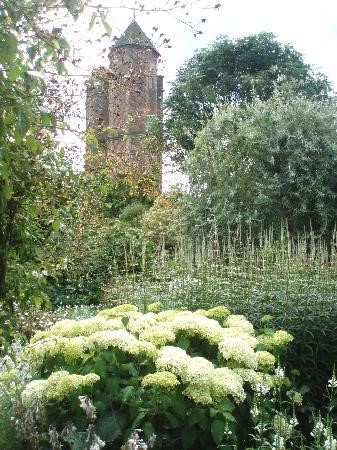“A room of one’s own… What [these words] propose to anyone who admits them into the space of a daydream, is a place of solitude a few steps off the beaten track of everyday life.”
So wrote Michael Pollen in A Place of My Own.
And he wasn’t talking about greenhouses.
But he could have been.
Pollen’s reputation rests on his writings on food sustainability (and sanity), but this lesser-known volume is subtitled the “education of an amateur builder”, a learning curve he experienced through the construction of a superior shed by himself, who had never done more than pick up the occasional hammer.
This book, his second, after Second Nature: a gardener’s education, is following an obvious track: In the mind of a gardener, a shed is a mystical realm, one filled with life and death-giving potions, weapons possessed of special powers, comfy armchairs, tattered seed catalogues, treasured plants that need coddling, and the solitude necessary to nourish dreams of next season’s crop rotation…or the next book in your ouvre.
Speaking of which, one of the most outstanding sheds of all time must be that of the English writer, Victoria Sackville-West.
 Vita at work.
Vita at work.
It was her writing room, installed at the top of a red-brick 16th century tower at the heart of her garden, Sissinghurst (and which may have inspired Virginia Woolf’s metaphoric A Room of One’s Own , but there’s not the space to examine that here).
 Sissinghurst Castle’s tower, seen from the White Garden.
Sissinghurst Castle’s tower, seen from the White Garden.
This was Sackville-West’s powerhouse and an echo down the ages from the Renaissance essayist, Michel de Montaigne’s description of his tower-shed, from which, “it is easy for me to oversee my household…and have a view of my garden, my chicken-run, my backyard and most parts of my house.”
I’ll take it!
Shed design is a highly personal form of expression and runs the gamut from cookie cutter wooden cubes purchased from big-box stores, to yard-art fantasies, my personal favorite.
Amazing what can be done with a selection of old doors and windows from Habitat for Humanity Restores in crafting the sort of structure where shed and greenhouse overlap.

Eco friendly, or simply economical? This hard-working but inviting structure sits on a main residential street near the heart of downtown Colorado Springs. For more inspiration check out the UK’s Shed of the Year contest.
In Germany, this overlap has been refined by the tradition of Schrebergärten – a community garden movement started in the late 19th century by Dr Daniel Schreber as a way to improve the lives and morals of the city dwellers in Leipzig. Strips of land along the urban edge were, and still are, allotted to families to “farm”, garden, and tend like their own backyards; the most extensive being in Berlin.
My first experience of these trim, yet highly individualized plots was on a visit to Ingoldstadt, a few hours west of Munich.
Spread beneath a post-war block of apartments and, as I remember it, running along the river bank, was a strip of land, uniformly sectioned into a garden patchwork, each block belonging, my guide explained, to an apartment dweller.
Each plot had its shed, bright with clean paint, daintily shuttered windows, tidy mini-porch just big enough for a chair or two, and gingerbread-trimmed rooflines.
All that was missing was a breadcrumb trail.

Some of Ingoldstadt’s proud Schrebergarten tenants.
But the gardens!
Unlike the ramshackle, unruly allotments banked by knock-together sheds I was used to seeing, each neatly clipped grass carpet was home to a multi-generation gnome family gathered around a wishing well, and there were plenty of other goofy but endearing ornaments; vegetable beds were snugged in by fluffy duvets of perfectly groomed annuals, and there was yet room for a postage-stamp perennial bed and hybrid tea roses.
I don’t recall seeing any old tires transformed into swan planters, but they may have existed in some little wonderland that I missed. All this is to say that while gardens are today unquestioningly accepted as a form of highly personal expression, the same recognition has not been adequately paid to the architecture of the shed, whatever form it takes.
©Ethne Clarke, 2016


